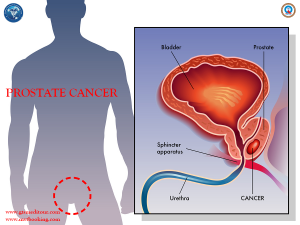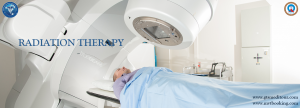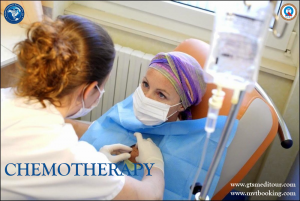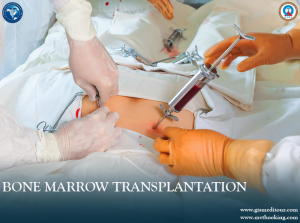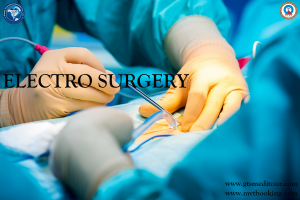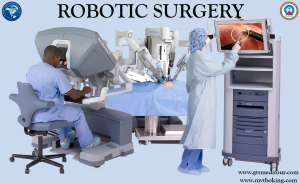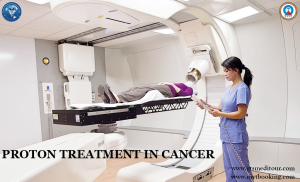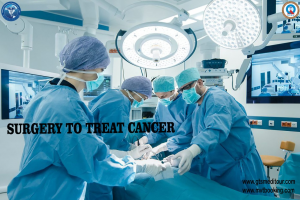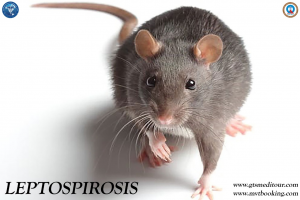DEFINITION
A cancer in a mans prostate , a small walnut sized gland that produces seminal fluid . A mans prostate produces the seminal fluid that nourishes and transports sperm. It is one of the most common types of cancer. Many prostate cancers grow slowly and are confined to the prostate gland, where they may not cause serious harm. However while some types of prostate cancer grow slowly and may need minimal or even no treatment other types are aggressive and can spread quickly.
SYMPTOMS
Symptoms and signs of prostate cancer may include
- Frequent urination
- Weak or interrupted urine flow or the need to strain to empty the bladder.
- The urge to urinate frequently at night
- Blood in the urine
- New onset of erectile dysfunction
- Pain or burning during urination which is much less common
- Discomfort or pain when sitting caused by an enlarged prostate
Other noncancerous conditions of the prostate such as BPH or an enlarged prostate can cause similar symptoms .Or the cause of a symptom may be a different medical condition that is also not related to cancer .Urinary symptoms also can be caused by an infection of the bladder or other conditions
If cancer spread outside of the prostate gland symptoms may include
- Pain in the back , hips ,thigh ,shoulders or other bones
- Swelling or fluid build up in the legs or feet
- Unexplained weight loss
- Fatigue
- Change in bowel habits
CAUSES
Its not clear what causes prostate cancer. Prostate cancer begins when cells in the prostate develop changes in this DNA. A cells DNA contains the instruction that tell the cells to grow and divide more rapidly than normal cells do. The abnormal cells continue living , when other cells would die. The accumulating abnormal cells form a tumor that can grow to invade nearby tissue . In time some abnormal cells can break away and spread metastasize to other parts of the body
RISK FACTORS
- Age
- Race
- Family history
- Hereditary breast and ovarian cancer (HBOC)
- Other genetic changes
- Eating habits
COMPLICATIONS
- Erectile dysfunction
- Incontinences
- Metastasis
STAGES OF PROSTATE CANCER
TNM Staging:
TNM system is a way of staging prostate cancer. TNM stands for Tumor, Node, Metastasis
T1-T1 means the cancer is too small to be seen on a scan , or felt during examination of the prostate. Its divided into T1a, T1b, T1c.T1ameans that the cancer is in less than 5% of the removed tissue.T1b means that the cancer is in 5 % or more of the removed tissue . T1c cancers are found by biopsy for example after a raised PSA level
T2-T2 means the cancer is completely inside the prostate gland. Its divided into T2a, T2b and T2c.T2a means the cancer is in only half of one side of the prostate gland.T2b means the cancer is in more than half of one side of the prostate gland , but not both sides.T2c means the cancer is in both sides but is still inside the prostate gland
T3-T3 means the cancer has broken through the capsule of the prostate gland. Its divided into T3a and T3b.T3a means the cancer has broken through the capsule of the prostate gland.T3b means the cancer has spread into the tubes that carry semen.
T4z-T4 means the cancer has spread into other body organs nearby such as the back passage ,bladder or the pelvic wall
NODES-N
NODES(N) describes whether the cancer has spread to lymph nodes. N is split into N0 and N1 . No means that the nearby lymph nodes does not contain cancer cells.N1 means there are cancer cells in lymph node near the prostate
METASTASIS-M
M describes whether the cancer has spread to different part of the body
There are two stages- M0 and M1.M0 -cancer has not spread to other parts of the body,M1 -cancer has spread to other parts of the body
TREATMENT
Considering the factors like
- The size of your tumor and how far it has spread .This is called the stage of your disease
- How quickly the tumor is likely to grow
- Your age and how healthy you are
- Your personal preferences
- Surgery-Its an option if you are healthy and your cancer has not spread. There are several types. Your doctor may only remove your prostate gland or they might take it and the tissue around it
- Radiation- this treatment uses high energy beams to kill the cancer cells. Its often a chance if your cancer is low grade or still only in your prostate
- Proton beam radiation -This special type of radiation therapy uses very small particles to attack and kill cancer cells that have not spread
- Hormone therapy- Prostate cancer cells need male hormone testosterone to keep growing . This treatment keeps the cancer cells from getting them
- Chemo therapy- Drugs that you take by mouth or through IV travel through your body, attacking and killing cancer cells and shrinking tumors
- Immuno therapy- This treatment works with your immune system to fight the disease
- Cryotherapy- If you have early prostate cancer your doctor may choose to kill cancer cells by freezing them
- High intensity focused ultra sound- This device produce sound waves that deliver heat energy to kill cancer cells
To get opinion from our network of hospitals visit mvtbooking.com or send email to query@gtsmeditour.com
Prepared by : Dr Sajna Hamza

